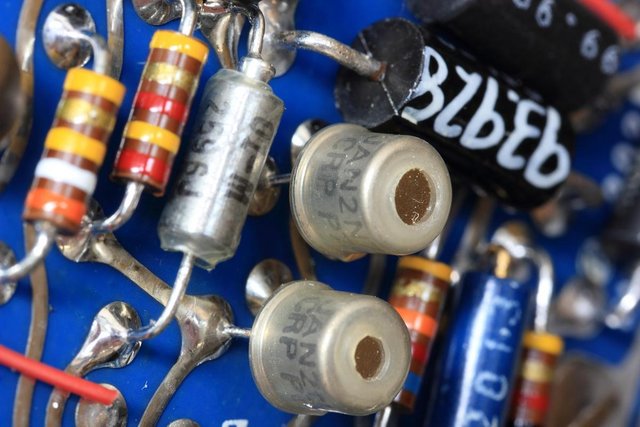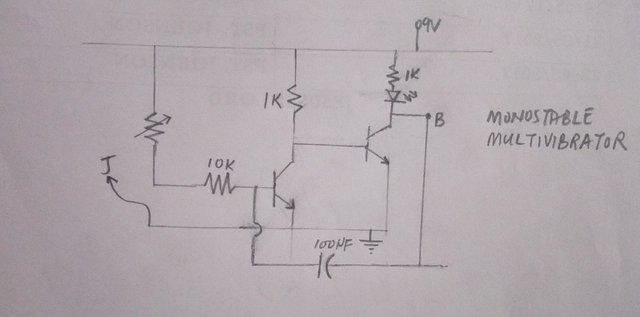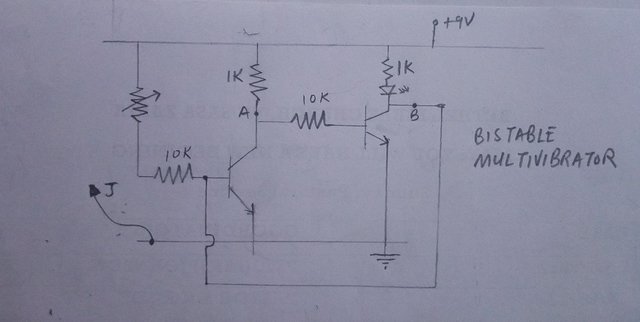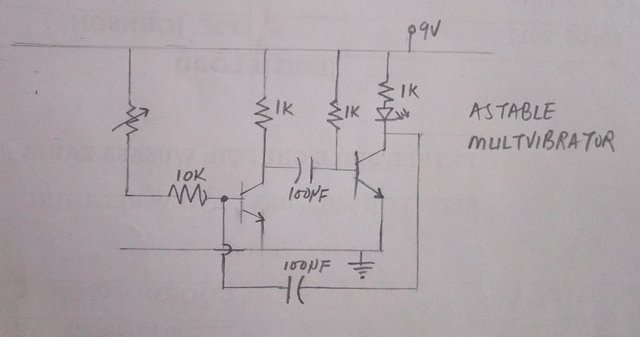Introduction to Basic Electronic Components #9: Come Learn How to Build Basic Electronic Devices

Its been really long since I dropped this series and I hope I didn't disappoint some of you guys by doing so. I sincerely apologize, but I have been quite busy with a project and didn't have time to talk about electronics. I figured out it would be nice to share the project I have been working on with the steemstem community but it dawns on me that I haven't really treated all the basics about electronics needed to jump into this project.
So in the subsequent posts in this series, I will treat some basics that will help you understand what I will be doing when I eventually start talking about my project. So hang on, for today I will be talking about Multivibrators
What are Multivibrators?
A multivibrator is an electronic circuit used to implement a variety of simple two-state devices such as relaxation oscillators, timers and flip-flops
So what does this mean?
In simple English, what this means is that multivibrators are circuits that give us the ability to create devices that implement two states "ON or OFF".
Types of Multivibrators
There are basically three types of multivibrators: the Bistable Multivibrator, the Monostable Multivibrator, and the Astable Multivibrators.
Before diving in, below is a table that will aid us to understand them better:
| Multivibrators | Delay | Trigger | Check |
|---|---|---|---|
| Monostable | 1 | 1 | 2 |
| Bistable | 0 | 2 | 2 |
| Astable | 2 | 0 | 2 |
Monostable Multivibrators
Monostable multivibrators have 1 typical stable state - from the name "mono" - and the other state is governed by time. In its stable state it is either OFF or ON but with a trigger, we can distort its stable state, and with time it returns to back to its stable state.
Why do we need such a device? where can it be applied? We see the application of monostable multivibrator in timers, delay circuits, gated circuits etc. For example, we want to turn ON a TV and watch it for 45 minutes and when the time elapse we want the TV to OFF, we would use a monostable multivibrator. Here the trigger is "putting on the TV" and the time for it to return to its stable state is determined by the time constant RC.
The circuit

Working Principle
When the circuit is connected the LED comes ON and remains ON but within a short space of time it goes OFF, this is because of the charging effect of the Capacitor. Now, when J is tapped momentarily @ B the LED comes ON, because by using J to tap B the capacitor discharges.
"Need further explanation? why not check my detailed post on transistors"
Bistable Multivibrators
Bistable multivibrators have two stable states and maintain a single state without changing unless influenced by a trigger. To change from one state to another we would need a trigger and in total to return to the original state we would need two triggers - one, to change its state and the other, to return to the original state.
They are applied in manual switching circuits. Probably you want a device to power on but don't want it to automatically power off you will use a bistable multivibrator - it reserves the right for the user to do as he wishes either ON or OFF just like a normal light bulb switch.
The Circuit

Working Principle
When J is tapped momentarily @ B, the LED comes ON and stays 'ON' forever, even with J removed. If again J is tapped momentarily @A, the LED turns OFF and remains 'OFF' forever even with J removed.
"Need further explanation? why not check my detailed post on transistors"
Astable Multivibrators
Astable multivibrators have no single stable state. Once power is connected or they are switch on the state of the circuits begins to alternate between ON or OFF just like an alternating current. Astable multivibrators generate square wave and are thus used as square wave generators.
They are used to control blinking lights just like the ones used for Christmas lights. Because speakers use alternating current to work, we can use astable multivibrators to create sounds of different pitch from a speaker depending on the ON time to OFF time ratio, also known as its Duty Cycle
The Circuit

Working Principle
When the circuit is connected the LED turns ON and OFF continuously because of the charging and discharging of the two capacitors. The two capacitors charge and discharge interchangeably, that is, when one charges the other discharges, affecting the input at the base of Transistor (2)
"Need further explanation? why not check my detailed post on transistors"
Multivibrators are really important in electronic circuitry, that is, if you intend on making anything ranging from a timer, flip-flop or a square wave generator.
Side Note: I just hope I was able to explain it (multivibrators) to everyone's understanding, because understanding how multivibrators work and how they are applied is key to understanding how the projects I will venture into will work. Nonetheless, if you would like to read more about multivibrators do check the links I will leave below.
Reference:
Image Credit:
- First Image from pixabay.com
- Any other image belongs to me and were captured using my phone

I think you are absolutely right with your point of view. Thanks for sharing this.
3.45% @pushup from @kenadis